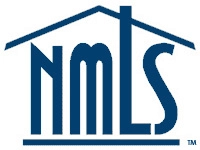P&L VS BANK STATEMENT LOANS: WHICH WORKS FOR SELF-EMPLOYED BORROWERS?
With the gig economy on the rise, there has been an increase in self-employed individuals across the country. While this segment of the population is experiencing a boom in business, they’re still facing major hurdles when it comes to financing properties thanks to the stringent requirements traditional lenders require during the transaction process.
Fortunately, there are alternative solutions that are geared towards self-employed borrowers. With Profit and Loss (P&L) and Bank Statement loans, these borrowers can secure strong financing that makes sense for their specific financial needs. The best part? You can tap into this growing market and get the “yes” your clients have been waiting for.
Not sure which solution works best for your self-employed clients? Here’s a quick breakdown of what you need to know about P&L and Bank Statement loan solutions:
Bank Statement Loans Explained:
A Bank Statement loan is an alternative solution that allows borrowers to qualify for mortgage financing by submitting bank statements in lieu of tax returns or other income docs that traditional lenders usually require for funding.
P&L Loans Explained:
A Profit and Loss loan is a solution that allows borrowers to qualify for financing by using their profit and loss statements. These documents provide a detailed summary of a company’s revenues, costs, and expenses over a specific period, typically quarterly or annually. They help assess the profitability and financial health of a business by indicating whether it is generating a profit or incurring losses during the stated period.
Instead of simply analyzing tax returns, lenders will complete a comprehensive examination that can include balance sheets, income statements, revenue trends, profit margins as well as overall financial performance.
How Are They Similar?
- Borrower Type: Both Bank Statement and P&L loans are ideal for small-business owners and self-employed individuals (think freelancers, realtors, contractors, and gig workers). These professionals often have trouble providing traditional income documentation like tax returns, but that doesn’t mean they don’t have the funds to secure a strong mortgage. These solutions are designed to give them more flexibility when applying for a loan.
- Alternative Underwriting: While banks are not able to give these borrowers leeway due to tax return requirements, Bank Statement and P&L loans conduct alternative underwriting methods that provide them with more options for funding. These programs don’t just focus on tax returns, but also other financial factors like bank statements, balance sheets, etc.
How Are They Different?
- Income Documentation: Both solutions offer alternative documentation options, but there is a slight difference between the two. P&L loans require more extensive paperwork. From tax filing, 3rd party verification of the business income, and profit and loss statements to balance sheets and income statements, lenders will look to these docs to get an overall view of the borrower’s financial health. On the other hand, Bank Statement loans primarily rely on – you guessed it – bank statements to evaluate cash flow and income. It’s ideal for self-employed borrowers who may have irregular income or limited financial documentation.
- Income Verification: Since P&L loans are tailored more for small-business owners, lenders will verify their business’s overall profitability. This is done by conducting a thorough examination of the borrower’s income, revenue trends, and profit margins to determine whether the borrower has the ability to repay the loan over time. A Bank Statement loan will assess the cash flow – inflow and outflow of funds – to determine whether there is a consistency of income through the borrower’s bank deposits.
- Approval Process: The P&L loan approval process may be influenced by the overall financial health of the business, while Bank Statement loans focus on the borrower’s cash flow as reflected in their bank statements. The former considers a wider range of financial factors (think net profit).
In the end, both loan solutions are strong options for self-employed borrowers and small-business owners. Our suggestion? Discuss your client’s current business and financial standing to determine which solution better aligns with their goals.
LendSure Blog April 3, 2024














